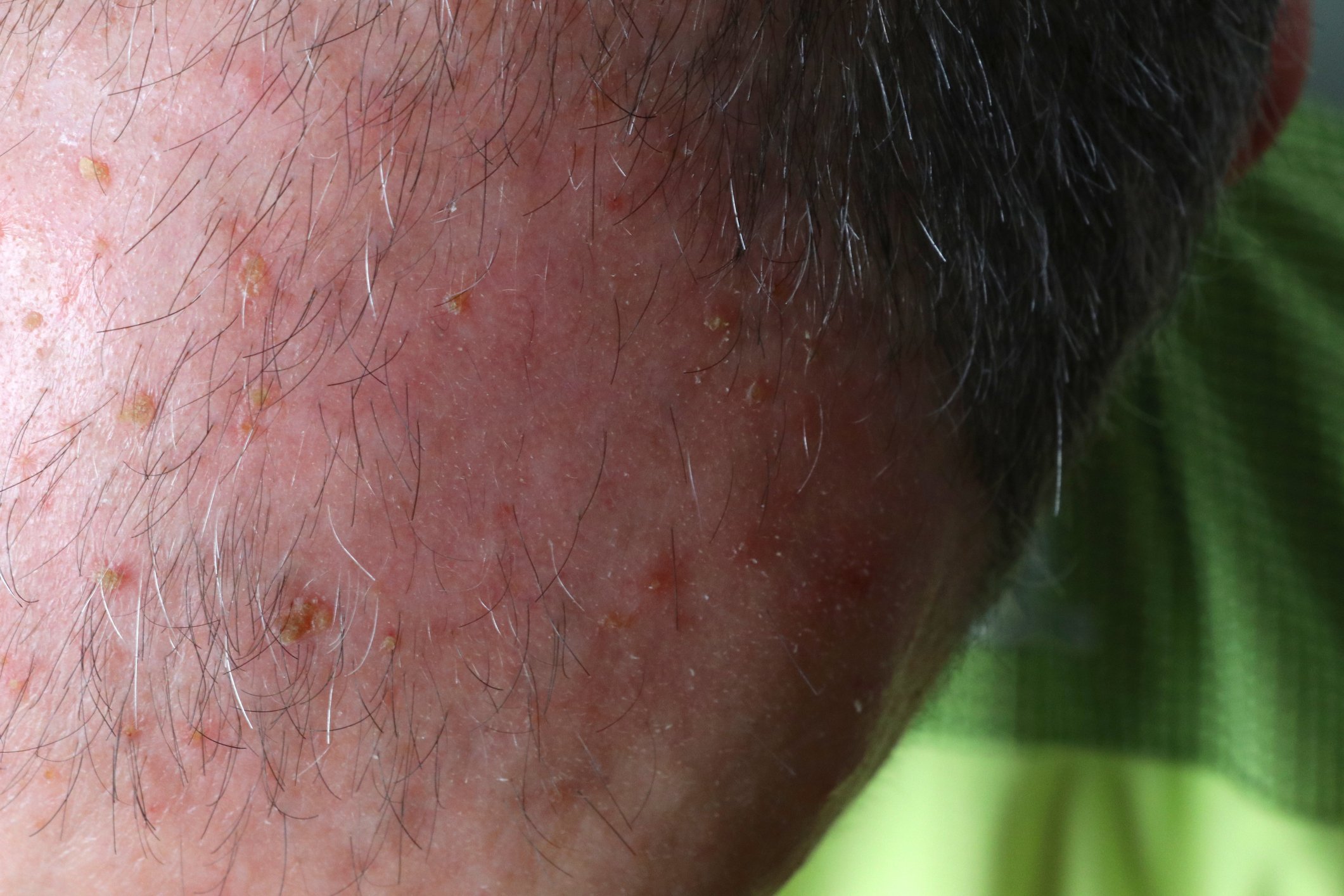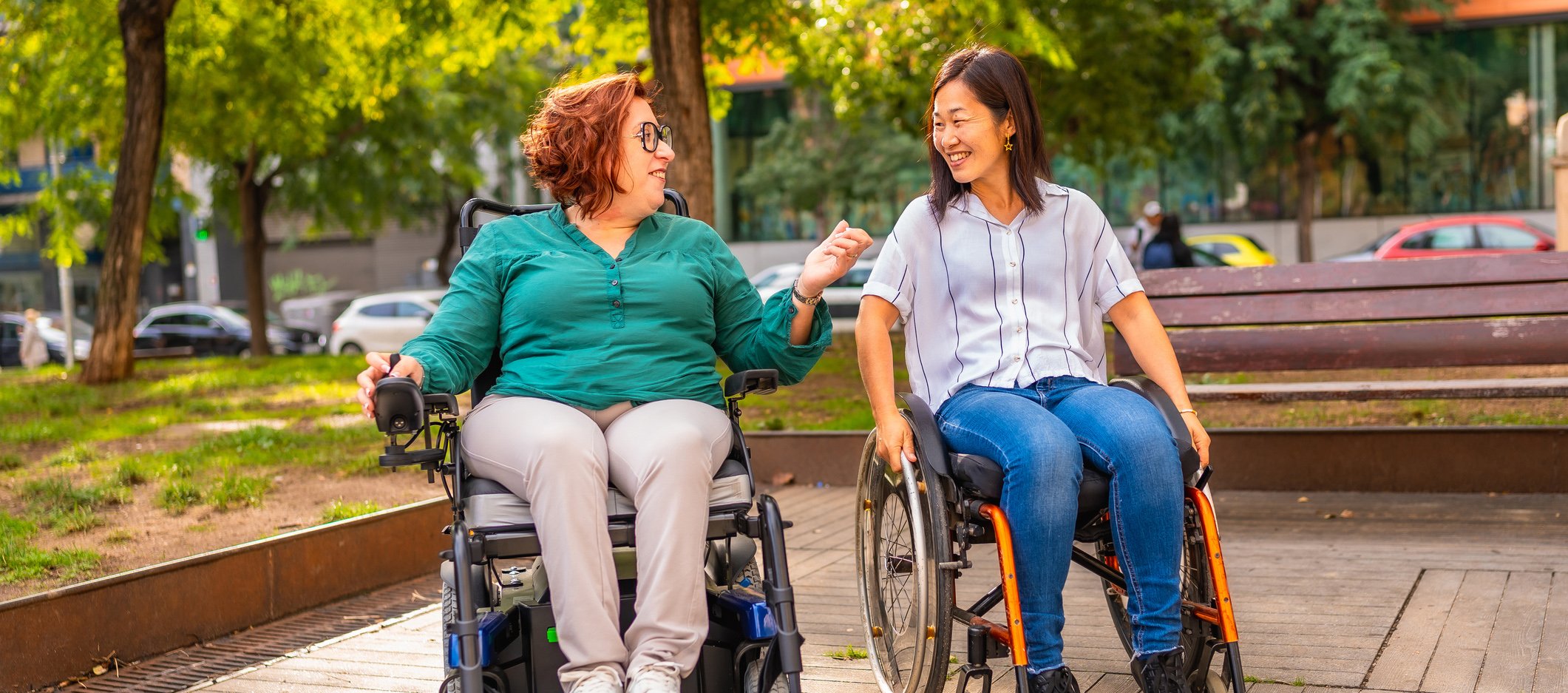Lipedema is by no means simply “being overweight”. It shows specific clinical characteristics and also requires individualized therapy. The psychological strain should not be underestimated. Birgit Wörle, MD, head of the Lipedema Center Central Switzerland, provides information.
Dr. Wörle, how is lipedema defined and what is known about its etiology/pathogenesis?
Dr. Wörle:
Lipedema is a chronic progressive disease characterized by a fat distribution disorder with sometimes significant disproportion between slender trunk and voluminous extremities. The disease develops due to circumscribed, symmetrically localized subcutaneous adipose tissue proliferation of the legs and/or, less commonly, the arms. Characteristic is the increased sensitivity to touch. There is pressure pain and usually also spontaneous pain in the affected regions. Edema and a tendency to hematoma after minor trauma are also typical.
The following terms are often used synonymously: Lipomatosis dolorosa, Lipohypertrophia dolorosa, Lipohyperplasia dolorosa, Adipositas dolorosa, Lipalgia, Adiposalgia, Painful lipedema syndrome or Painful columnar leg.
The disease affects almost exclusively women and occurs during periods of hormonal changes (puberty, pregnancy, menopause). It is estimated that about 5% of Swiss women suffer from lipedema. A familial clustering of cases is observed. Unfortunately, valid epidemiological data from larger studies are not available. Individual case reports of affected men are related to hormone therapies/disorders (e.g. hypogonadism) or liver cirrhosis.
The etiology of the disease is as yet unknown. The pathomechanisms and especially the specific role of hormones or hormone receptors are unclear.
How exactly are the individual processes you mentioned, such as adipose tissue proliferation, edema, and hematoma tendency, related?
The increase in adipose tissue is due to hyperplasia and hypertrophy of fat cells in the area of the affected extremities. Due to a capillary permeability disorder, excessive fluid enters the interstitium. The lymphatic system initially reacts to this with increased lymphatic transport. Due to a resulting high-volume transport insufficiency, the subcutaneous fat and connective tissue can no longer be sufficiently drained, and edema develops. The delayed and decreased venoarterial reflex also promotes orthostatic edema in lipedema. Over the course of many years, secondary lymphedema (lipolymphedema), fibrosis of the subcutaneous fatty tissue, and sclerosis and papillomatosis of the dermis may develop. Increased capillary fragility is causative for the increased hematoma tendency.
What tools and instruments are used for (differential) diagnosis and follow-up, and where might difficulties in diagnosis lie?
The diagnosis of “lipedema” is primarily made on the basis of clinical criteria. History, inspection and palpation lead to the typical characteristics here, which include: female sex, onset with puberty, pregnancy or menopause, disproportionate symmetrical adipose tissue proliferation on the extremities, muff/collar formation above the joints (caliber jump), hands and feet not affected, painfulness on palpation or spontaneously (increasing during the day), feeling of heaviness and tension, edema (increasing during the day), hematoma tendency, negative Stemmer’s sign.
Differential diagnosis must primarily consider lipohypertrophy, obesity, and lymphedema. This differentiation is also based on clinical features: Fat proliferation, disproportion, edema, tenderness, and hematoma tendency. All five characteristics are exclusively fulfilled in lipedema. The guiding criterion in lipedema is pain. In lipohypertrophy (aesthetic “breeches syndrome”), edema and tenderness are absent, and a hematoma tendency may be present. Obesity usually does not show disproportion, edema is possible, pressure pain and hematoma tendency are not present. The diagnosis of lymphedema runs through the edema, disproportion is present, fat proliferation is possible; usually there is asymmetry. Pressure pain and hematoma tendency are not present in lymphedema.
Other differential diagnoses include phlebedema (edema and skin sign of chronic venous insufficiency), myxedema in thyroid dysfunction (doughy edema), and combined disorders: Lipedema with secondary lymphedema, lipedema with concomitant obesity, obesity with secondary edema (adiposity edema), obesity with fibromyalgia.
Suitable parameters for monitoring the course of lipedema are body weight, BMI, waist-to-hip ratio (WHR), waist-to-height ratio (WHtR), and circumference and volume measurement of the extremities (perometry). An elevated BMI can be misleading in lipedema – the WHR is usually clarifying in this case. These parameters are also helpful in cases with difficult differential diagnosis, e.g. in differentiating lipedema from obesity.
Morphologic examinations and functional studies of the lymphatic system are not diagnostic in lipedema and therefore are not required in routine clinical practice.
You have already mentioned it: the course of the disease is chronic-progressive. Can it be influenced therapeutically at all, i.e. do we have a disease-modifying/causal therapy or only a symptomatic therapy?
The disease “lipedema” is indeed chronic-progressive, moreover individually different and unpredictable. It can be divided into stages (I-III, Fig. 1) according to localization and morphology. A distinction is made in the lower extremities between the thigh, whole leg and lower leg types, and in the upper extremities between the upper arm, whole arm and lower arm types. In each case, the order mentioned reflects the frequency of occurrence in a decreasing trend. A thigh type may develop into a whole leg type as it progresses. The stage can be defined by the following morphological characteristics:
- Stage I: Smooth skin surface with uniformly thickened, homogeneously imposing subcutis
- Stage II: Uneven, predominantly wavy skin surface, nodular structures in thickened subcutaneous area
- Stage III: Pronounced circumferential proliferation with overhanging tissue portions (dewlap formation).

A transition from stage I to stage II or III is possible depending on the course of the disease. However, the greater intensity of the complaints does not correlate with the higher stage. The pain in stage I may be much more pronounced than in stage II or III. Photo documentation therefore often does not do justice to the symptomatology of the complaint and the degree of suffering. In many cases, the aesthetic component is figuratively in the foreground.
Now to your question whether the course of the disease can be influenced causally, i.e. in its cause: No, such a therapy is not known (since the exact etiology is also unclear). However, there are symptomatically effective measures that are individually combined and adapted to the symptoms. Consequently, the treatment of lipedema aims to relieve or eliminate symptoms (pain, edema, and disproportion) and prevent complications. In advanced stages, the risk of complications (maceration, bacterial and mycotic skin infection, erysipelas, lymphedema, leg deformities, and gait disturbances) increases.
The surgical measure, liposuction under tumescent local anesthesia, can at least stop the progression of the disease, and in this sense is “disease-modifying”. It is a well-established, low-risk, tissue-sparing surgical method that can be used to selectively and permanently remove up to 85% of the excess fat cells. The procedure leads to pronounced improvements in spontaneous pain, pressure pain, edema, hematoma tendency, freedom of movement as well as body shape – and thus also to an increase in the patient’s quality of life and self-esteem. In some cases, conservative therapy can then be dispensed with completely. However, liposuction for the treatment of lipedema is currently not yet included in the catalog of services provided by health insurance companies.
Why don’t you give a brief overview of the therapeutic approaches addressed and their indications (edema, disproportion, pain).
The therapy of lipedema is based on four pillars:
- Conservative therapy: so-called complex physical decongestive therapy, i.e. initial decongestive phase by means of bandaging (one to two weeks) and subsequent maintenance phase with manual lymphatic drainage treatments (1-2×/week). This in combination with daily compression, exercise therapy and skin care. Apparent intermittent compression is useful as a supportive measure for decongestion and edema reduction, but it cannot replace manual lymphatic drainage and compression.
- As mentioned, surgical therapy includes fat tissue reduction by means of liposuction under tumescent local anesthesia (vibration-assisted technique or waterjet technique) using tissue-sparing, blunt microcannulas and, if necessary, subsequent removal of excess skin and tissue flaps with plastic surgery measures.
- Dietary changes to reduce body weight in cases of concomitant overweight or obesity, with avoidance of blood glucose and insulin spikes and observance of sufficient breaks between meals (isoglycemic diet). There is no diet specific to lipedema.
- Increasing physical activity. Exercises in the water (swimming, aqua-jogging, aqua-aerobics, aqua-cycling) are particularly effective in this respect, as they relieve the joints and burn calories through the water resistance. In addition, the lymphatic drainage is promoted by the water pressure. Furthermore, athletic exercises on the trampoline are favorable.
A medicinal resp. Diuretic therapy to eliminate leg edema is not indicated in lipedema (with/without secondary lymphedema). Drug-induced fluid deprivation in the interstitium leads to increased protein content and thus secondarily to increased edema.
Treatment goals of conservative therapy are edema reduction, pain relief, and reduction of hematoma tendency. As a rule, conservative therapy accompanies the patient for the rest of her life and sometimes massively restricts the quality of life.
Can you describe the compression stockings used in a little more detail? Which compression class is used?
They are firm, custom-made, flat-knitted corsetry of compression class II (with a seam at the back) – often two-piece, i.e. capri pants and knee-high stockings (since putting on a single pair of stockings of this quality every day requires a lot of commitment). Wearing is especially necessary in the hot season, but very difficult to tolerate here.
What role does the psychological side of the disease play in the treatment concept? In addition to the burden of the disease itself, the therapy also seems to be extremely labor-intensive, which requires a high level of compliance and motivation on the part of the patient.
That’s right, the psychological strain should not be underestimated. Many patients already feel stigmatized by the actual disease with its disproportionate appearance – an impression that can be exacerbated by conservative therapy, the daily wearing of compression corsetry and the time-consuming regular lymphatic drainage sessions. In addition, it is not uncommon for doctors and family to have advised weight reduction and more exercise for years, but the clinical picture was not recognized. Some patients feel guilty and helpless, unable to fight their apparent obesity. All the motivation did not help. Eating disorders or real obesity may be added to the mix. In individual cases, psychotherapeutic support is very useful for lipedema patients.
Interview: Andreas Grossmann
HAUSARZT PRAXIS 2017; 12(9): 3-4












